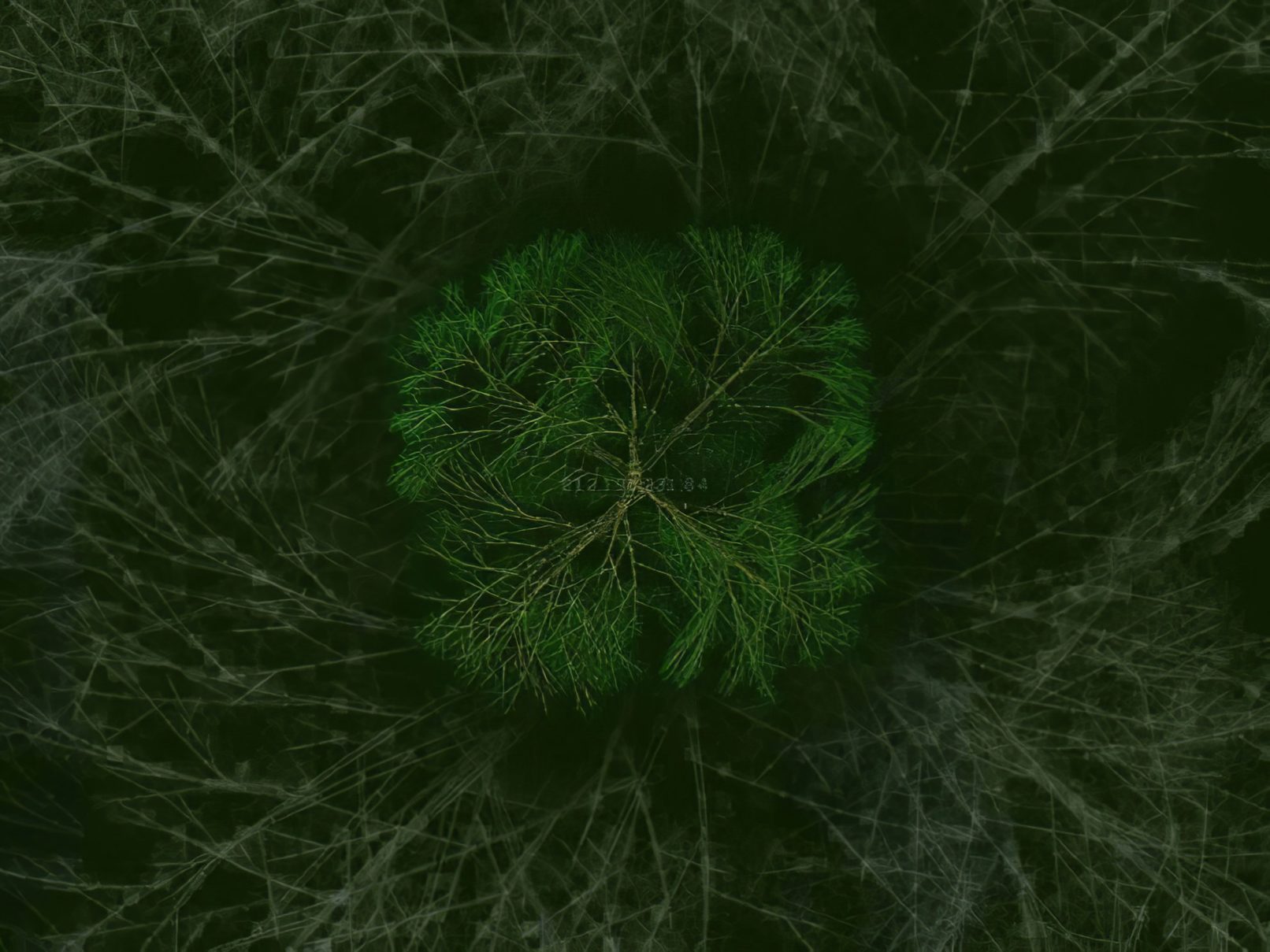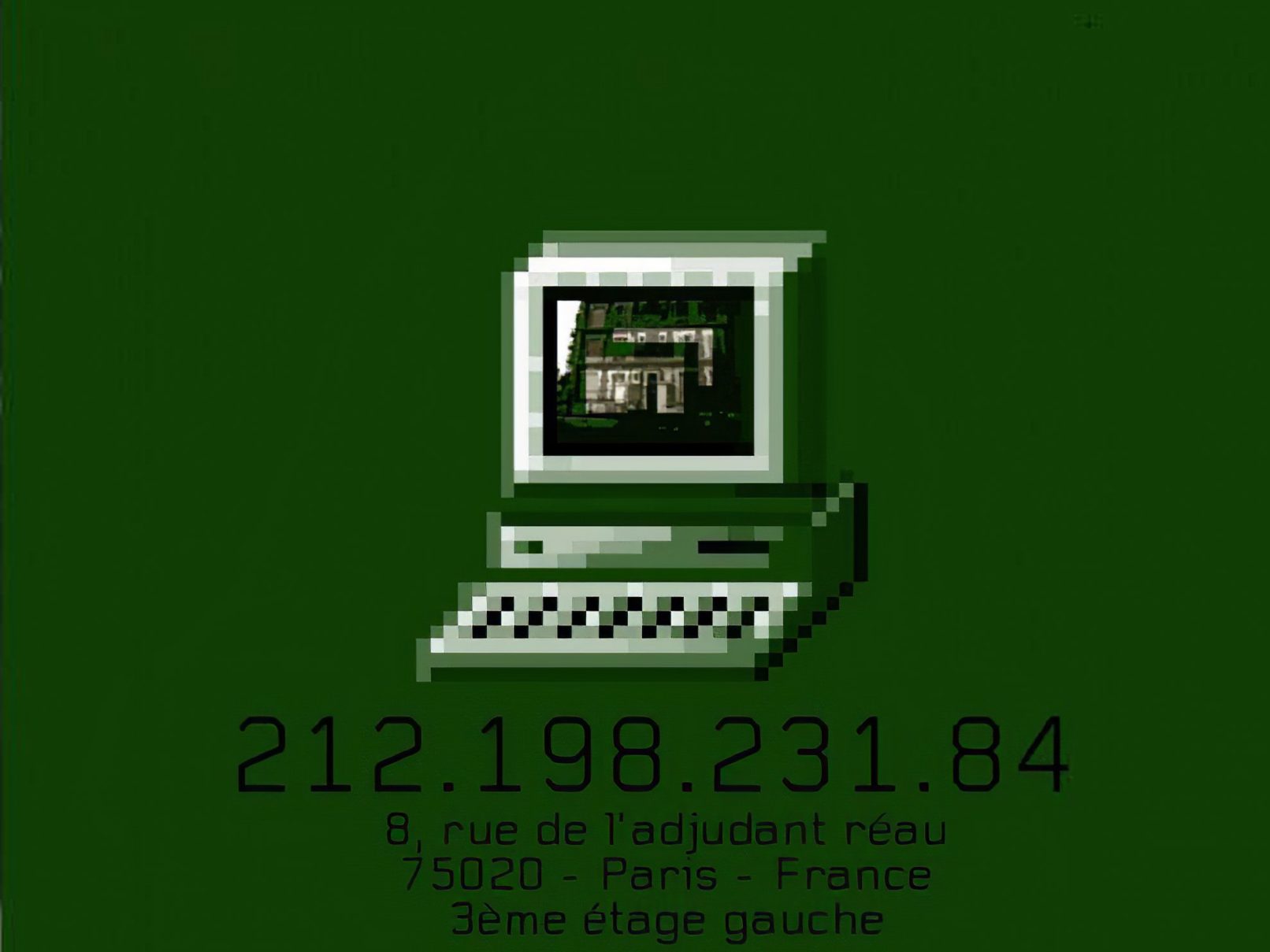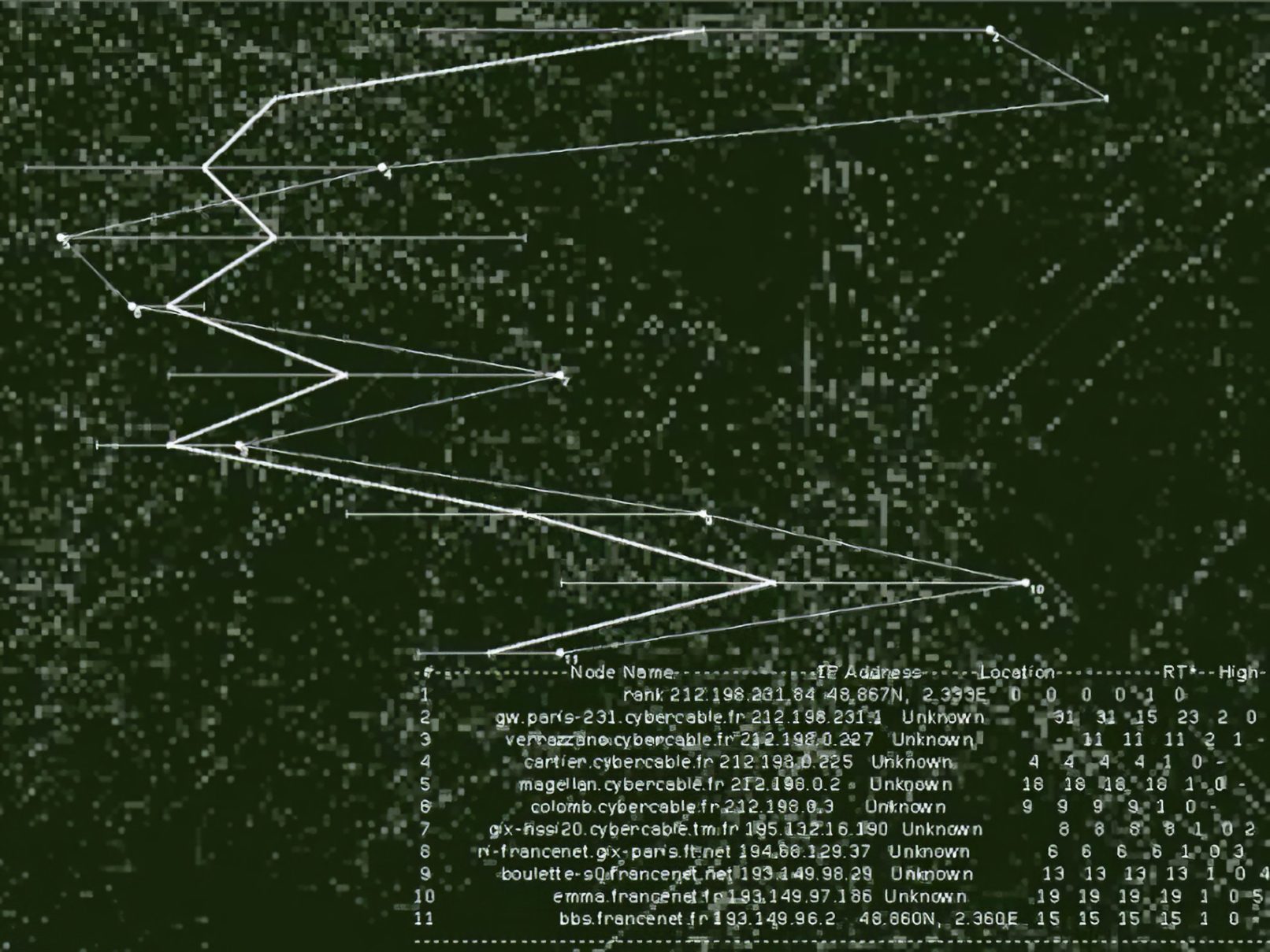Nervures (2000)
Between March 2001 and March 2001, R. Drouhin carried out a cooperative work called Rhizomes, which consisted in hosting on 192 geographically distant servers 192 fragments of images that were recomposed on the Rhizomes server to form a single image.
The latter was itself a matrix since it was a mosaic of images of trees that represented a hand. R. Drouhin thus shows that the deterritorialization of the network is not without territorialization. The visualization of the image of Rhizomes is concentrated but its constitution process is decentralized, dispersed, dissimulated.
With Nervures, I wanted to reverse this path of the image to show that the consultation of Rhizomes was itself territorialized: here the images are no longer visible, we only focus on the physical paths of information between the servers that host the images and a client workstation, mine. I used tracing software that allows me to visualize precisely the path taken by an item of information to get to my home.
It’s no longer a site that repatriates remote images, it’s the consultation of the Internet user that is dispersed in the network flow. The Internet user is himself territorialized, localized thanks to his I.P. (identification of position).
–
Entre mars 2001 et mars 2001, R. Drouhin a réalisé une oeuvre coopérative nommée Rhizomes qui consistait à faire héberger sur 192 serveurs géographiquement distants 192 fragments d’images qui se recomposaient sur le serveur de Rhizomes pour ne former qu’une seule image.
Cette dernière était elle-même une matrice puisqu’elle était une mosaïque d’images d’arbres qui figurait une main. R. Drouhin montre ainsi que la déterritorialisation du réseau ne va pas sans une territorialisation. La visualisation de l’image de Rhizomes est concentrée mais son processus de constitution est décentralisée, dispersée, dissiminée.
Avec Nervures j’ai voulu inverser ce parcours de l’image pour montrer que la consultation de Rhizomes était elle-même territorialisée : ici les images ne sont plus visibles, on s’attache uniquement aux parcours physiques des informations entre les serveurs qui hébergent les images et un poste-client, le mien. J’ai utilisé un logiciel de traçage permettant de visualiser précisément le chemin que parcourt une information pour arriver jusqu’à chez moi.
Ce n’est plus un site qui rapatrie des images distantes, c’est la consultation de l’internaute qui se disperse dans le flux du réseau. L’internaute est lui-même territotialisé, localisé grâce à son I.P. (identification of position).


